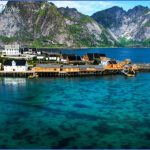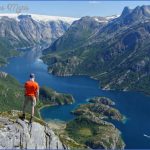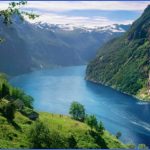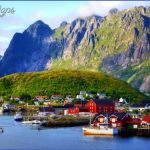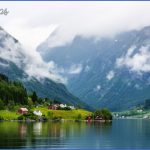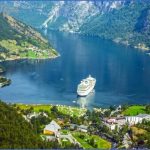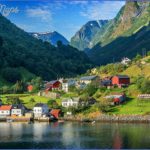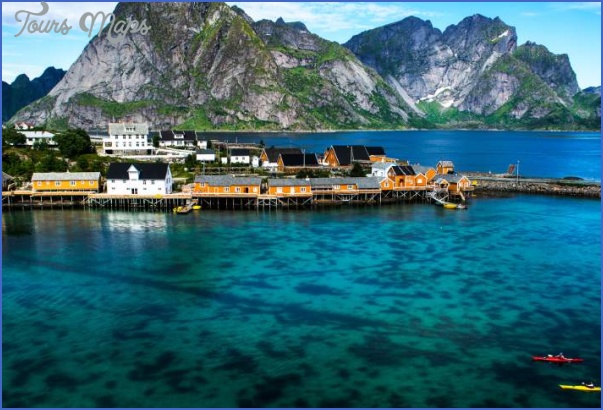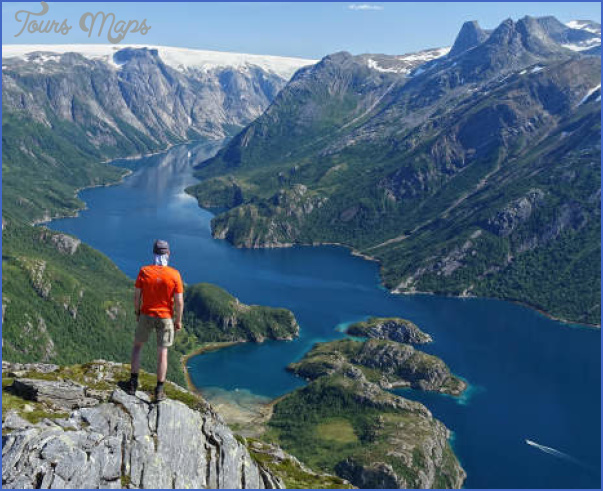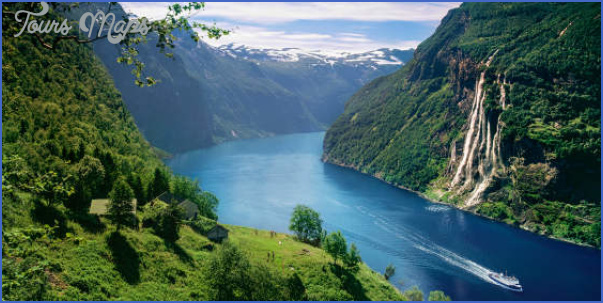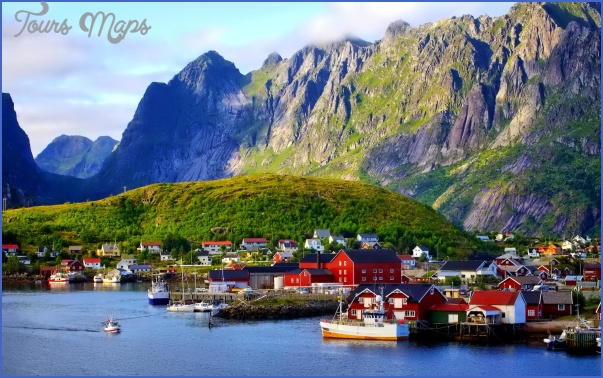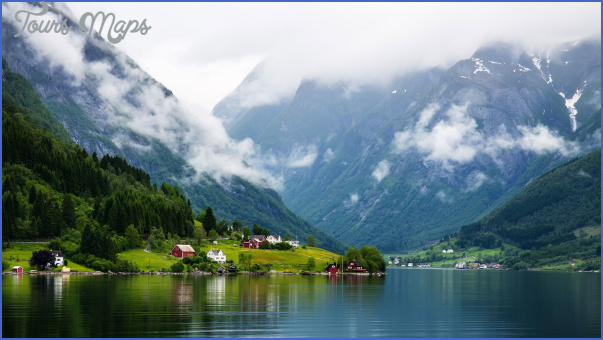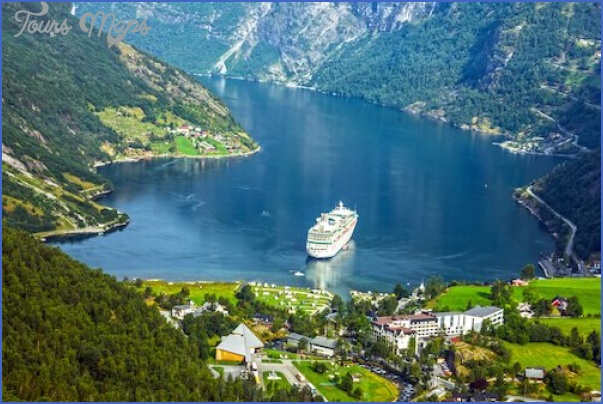In NORWAY neither geology nor climate are favourable to agriculture, and onlyjust over 3% of the country’s area is suitable for cultivation. In southern Norway corn and potatoes are grown, often unprofitably; farther north cattle-raising predominates, and in the extreme north there is reindeer herding. Goats, formerly reared in large numbers, are now giving way to cattle and pigs, and the traditional method of cattle farming, in which the cattle grazed in summer on the mountain pastures, is being replaced by cooperative dairy farming. A developing branch of agriculture is fur-farming (fox, mink). Arable farming is of relatively little significance in Norway, and is a long way from being able to meet the country’s needs.
Approximately a quarter of the country’s area is covered by forests producing usable timber (pine, spruce; in the north and at higher altitudes birch). The annual growth of timber is much greater than the rate of felling, so that there is room for expansion in this field.
The Norwegian fisheries have long been of central importance to the country’s economy, and the intricately patterned coastline provides excellent fishing grounds. A high proportion of the catch is sold on the international market in the form of canned, dried or deep-frozen fish. The number of small fishing boats has declined sharply in favour of larger and better equipped vessels, and for the part-time fishermen whose main source of income lies elsewhere, fishing is a seasonal occupation. The fish-processing industry, as might be expected, is concentrated around the principal fishing ports Stavanger, Bergen, Alesund, Kristiansund, Bodo, Harstad, Tromso and Hammerfest. The excellent salmon caught in Norway’s mountain rivers have a world-wide market.
Norway has numerous but relatively small deposits of minerals silver and copper (worked since the 17th c.), iron, pyrites, titanium, molybdenum, antimony and nickel. The coal required for smelting comes from Spitzbergen.
In 1968 very large fields of oil and natural gas were discovered in the North Sea off the Norwegian coasts, and these are now being worked. Additional large reserves of natural gas comparable in size, on a conservative estimate, with those of the Arabian peninsula have been discovered recently 1 50 km (95 miles) from Bergen. Thanks to these huge resources of energy, and to the large water power resources already available in northern Norway, numbers of new industries have been established, particularly along the coast. A notable achievement associated with the working of North Sea oil is the huge platform in the Ekofisk field known as Ekofiskbyen, with living accommodation and supply facilities, from which there is an oil pipeline to Teesside in the north of England and also a gas pipeline to Emden in West Germany. In 1980 the supply platform Alexander Kielland capsized. As a result of the discovery of oil off the coast, Norwegian
Oil rig off Stavanger shipyards have switched to the construction of giant tankers and drilling rigs.
The building of roads and railways in Norway, with its rocky and mountainous topography, is an expensive process, involving major engineering works (bridges, tunnels, protection against snow), costly maintenance, and the provision of ferry services. The only through road from south to north (interrupted by numerous ferries) is E6, which runs from Oslo via Trondheim and Narvik to Tromso and Hammerfest. The railway system is adequate only in the south of the country; in the north it is replaced by buses.
Norway’s international airport is Fornebu, near Oslo, and there is an extensive and efficient network of domestic air services.
Norway’s principal trading partner is Sweden, followed by Britain, West Germany and the other Common Market countries, the United States, Canada and, recently, Japan. As a member of the European Free Trade Association (EFTA), Norway has a customs agreement with the EEC. Roughly a sixth of Norway’s total exports is in ships and ship fittings, a seventh in metal ore, metals and metal alloys; the rest consists of timber and paper products, fish and fish products. The main imports are machinery and vehicles, salt for preserving fish, and foodstuffs.
The development of the Norwegian oilfields and the associated new industries calls for large-scale investment which the government alone cannot provide; and in anticipation of future revenues Norway has incurred large foreign debts. The economic upswing produced by North Sea oil has been accompanied by steep increases in prices and wages; but thanks to the creation of some 20,000 new jobs, unemployment is relatively low. The prospects for the future appear excellent.
NORWAY Photo Gallery
Maybe You Like Them Too
- The Best Cities To Visit in The World
- World’s 10 Best Places To Visit
- Coolest Countries in the World to Visit
- Travel to Santorini, Greece
- Map of Barbados – Holiday in Barbados

